Yesterday, I started out with my new resolution of doing half as much in a day. In fact I did just as much as usual, but much of it included screwing around on my computer trying to download podcasts and photos. I had a look at my product photos. They are a little better than the last ones (you can actually see the shirts) but not very good. Master photographer I am not. I am limited by my point-and-shoot camera, but I have managed to take decent photos with it before, so I think it might be my skill that's the problem. I will need to work on that.
For my warm-up I was to choose a motif to explore over and over again in my work. I think there is a motif that has found me: leaves. I don't know what it is about leaves, but I keep using them. They all look different, of course. At least most of them. I would have liked for my motif to be trees (which are very symbolic for me) but my trees never really turn out. So leaves it is.
For my podcast, I listened to the conclusion of the lecture that I was previously listening to, about craft and social movements in India. Today, there is a lot going on in the world of Indian crafts. Crafts are considered to be part of the heritage of India, but they are generally being replaced with mass-market goods, often from China. Sometimes Chinese mass-market goods are even made to look like Indian crafts! There are special stores, including government stores, who sell Indian crafts, and the growing middle class in India, who want quality products, is a new market for the crafts, as are craft collectors overseas. Some Indian crafts are of exceptional quality, as are the blockprints in this link. Notice how many steps are involved in creating the beadspread. However, some Indian crafts are not of such high quality, and the presenter didn't believe that people should buy the products just because they were handmade. He wanted to work with artisans and his design students to develop better products that would appeal to a larger audience, especially those who want something high-quality and don't care if it's handmade or not. There have been many problems with the artisan community in India. Most live below the poverty line, and people sometimes steal their ideas. The concept of intellectual property rights often a new idea to these people. There have been a number of suicides as people have watched their livelihoods become unviable. Often the artisans are women, who face additional social, economic, and political hurdles. However, artisanship is the second-largest employer in India (the first being agriculture) so it is essential to the economic development of the country. The speaker wanted to help the artisans use crafts to lift themselves out of their poverty and experience dignity.
I continued to work on my yarn-ball drawing. It is coming along, albeit slowly. I'm still not very happy with it. Unfortunately, it is the ball of yarn I've been weaving with, and I've run out of yarn on my shuttle, so I can't continue to weave until I've finished the drawing. I don't want any more scenes changing on me before I've finished them!
For my podcast, I listened to the conclusion of the lecture that I was previously listening to, about craft and social movements in India. Today, there is a lot going on in the world of Indian crafts. Crafts are considered to be part of the heritage of India, but they are generally being replaced with mass-market goods, often from China. Sometimes Chinese mass-market goods are even made to look like Indian crafts! There are special stores, including government stores, who sell Indian crafts, and the growing middle class in India, who want quality products, is a new market for the crafts, as are craft collectors overseas. Some Indian crafts are of exceptional quality, as are the blockprints in this link. Notice how many steps are involved in creating the beadspread. However, some Indian crafts are not of such high quality, and the presenter didn't believe that people should buy the products just because they were handmade. He wanted to work with artisans and his design students to develop better products that would appeal to a larger audience, especially those who want something high-quality and don't care if it's handmade or not. There have been many problems with the artisan community in India. Most live below the poverty line, and people sometimes steal their ideas. The concept of intellectual property rights often a new idea to these people. There have been a number of suicides as people have watched their livelihoods become unviable. Often the artisans are women, who face additional social, economic, and political hurdles. However, artisanship is the second-largest employer in India (the first being agriculture) so it is essential to the economic development of the country. The speaker wanted to help the artisans use crafts to lift themselves out of their poverty and experience dignity.
I continued to work on my yarn-ball drawing. It is coming along, albeit slowly. I'm still not very happy with it. Unfortunately, it is the ball of yarn I've been weaving with, and I've run out of yarn on my shuttle, so I can't continue to weave until I've finished the drawing. I don't want any more scenes changing on me before I've finished them!
For surface design, I tried two new techniques: Elmer's school glue resist with watered-down textile paint, and pole-wrap immersion dyeing. I have washed both out now and will post photos when they are dry and ironed.
Today, I started out with business study. I have now estimated all of my start-up costs and most of my monthly costs. The start-up costs are reassuring: I probably won't need a bank loan. However, my monthly costs are scaring me. I have no idea how many transactions to expect in a given day, and there are only two days of sales, and my products will be priced pretty high so I don't know if I'll be selling lots of them. I certainly hope I do! But there's no guarantee. But I suppose I will really only have to make about $200 a day to make those costs, which is one or two sales. If I could make two sales a day at that silly Catholic Church craft fair I attended last year, I could probably make more than that at the Portland Saturday Market!
Design. Oh, design. I wish this book had assignments because I am sucky at coming up with them on my own. Today's chapter was about shape. Shapes can imitate natural forms or they can be imaginary and abstract. There are geometric shapes, which we are all familiar with from elementary school, as well as biomorphic shapes, which suggest natural forms or forces (you could have a shape like a human body, or what you thought the wind looked like). Shapes do not have to have distinct boundaries: they can be suggested through closure, or implied shape. There is also amorphous shape, which is a blurry image which suggests a shape. Shapes can either be two- or three-dimensional, whether in sculpture or a 2-D picture plane. Mass refers to shapes on the picture plane and volume is the empty spaces. Shapes can appear 3-D while on a 2-D surface (plastic). This can be achieved by tilting the shapes in space, foershortening them, overlapping them, or grading the color, value, or texture. This is especially important when representing shapes like spheres or ovoids that do not have any flat surfaces. Use of perspective is one way of making shapes appear 3-D. A weird and cool effect can be created when the perspective lines tilt toward the viewer: it looks like you are looking through the shape. Some artists use 3-D effects without using perspective: medieval artists did not know about perspective, and more modern artists sometimes find it too constricting. Shapes can be used for the same compositional aspects that we previously studied: harmony and variety, either in the shape itself (a repeating motif) or the lines or interior shapes of the image; dominance, or making one shape more dominant than the rest of the image; movement, or the interior lines of viewing the shapes within the image; balance, in which we consider the visual weight of the shape, the negative area around it, the placement, size, and emphasis of the shape. I will continue with the shape composition in my next study.
I hope to continue to work on my stepmom's scarf today as part of my personal projects. I also might go over and review things in my design book to see how well they are actually sticking. The point of all this is to improve my design, after all.
Today, I started out with business study. I have now estimated all of my start-up costs and most of my monthly costs. The start-up costs are reassuring: I probably won't need a bank loan. However, my monthly costs are scaring me. I have no idea how many transactions to expect in a given day, and there are only two days of sales, and my products will be priced pretty high so I don't know if I'll be selling lots of them. I certainly hope I do! But there's no guarantee. But I suppose I will really only have to make about $200 a day to make those costs, which is one or two sales. If I could make two sales a day at that silly Catholic Church craft fair I attended last year, I could probably make more than that at the Portland Saturday Market!
Design. Oh, design. I wish this book had assignments because I am sucky at coming up with them on my own. Today's chapter was about shape. Shapes can imitate natural forms or they can be imaginary and abstract. There are geometric shapes, which we are all familiar with from elementary school, as well as biomorphic shapes, which suggest natural forms or forces (you could have a shape like a human body, or what you thought the wind looked like). Shapes do not have to have distinct boundaries: they can be suggested through closure, or implied shape. There is also amorphous shape, which is a blurry image which suggests a shape. Shapes can either be two- or three-dimensional, whether in sculpture or a 2-D picture plane. Mass refers to shapes on the picture plane and volume is the empty spaces. Shapes can appear 3-D while on a 2-D surface (plastic). This can be achieved by tilting the shapes in space, foershortening them, overlapping them, or grading the color, value, or texture. This is especially important when representing shapes like spheres or ovoids that do not have any flat surfaces. Use of perspective is one way of making shapes appear 3-D. A weird and cool effect can be created when the perspective lines tilt toward the viewer: it looks like you are looking through the shape. Some artists use 3-D effects without using perspective: medieval artists did not know about perspective, and more modern artists sometimes find it too constricting. Shapes can be used for the same compositional aspects that we previously studied: harmony and variety, either in the shape itself (a repeating motif) or the lines or interior shapes of the image; dominance, or making one shape more dominant than the rest of the image; movement, or the interior lines of viewing the shapes within the image; balance, in which we consider the visual weight of the shape, the negative area around it, the placement, size, and emphasis of the shape. I will continue with the shape composition in my next study.
I hope to continue to work on my stepmom's scarf today as part of my personal projects. I also might go over and review things in my design book to see how well they are actually sticking. The point of all this is to improve my design, after all.
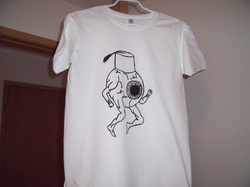

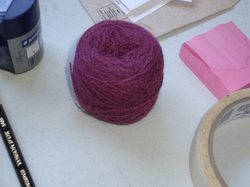
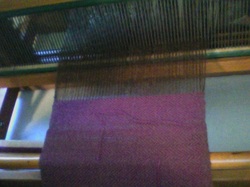
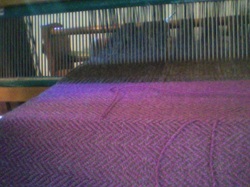
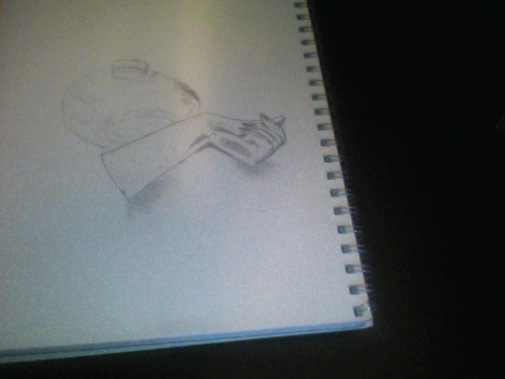
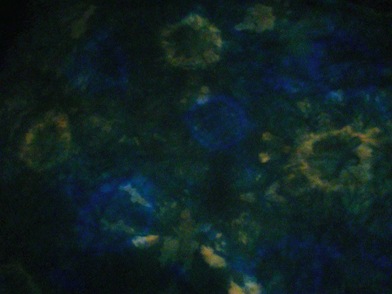
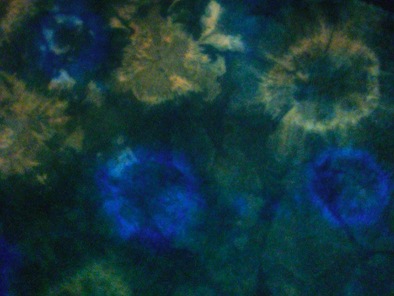
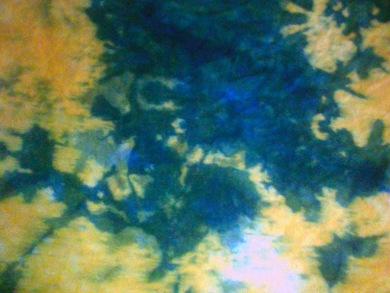
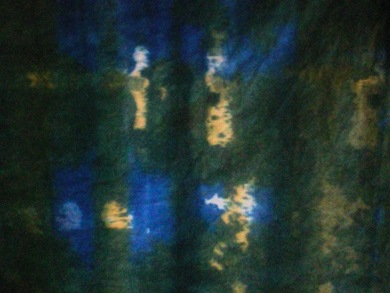
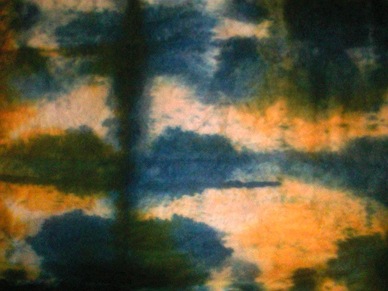

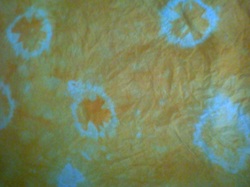
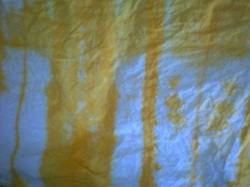
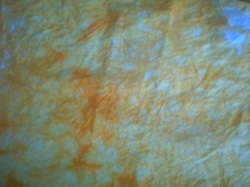
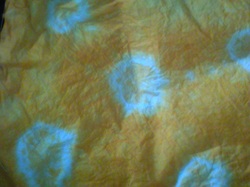


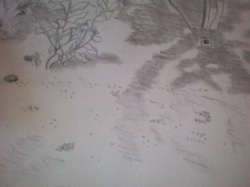
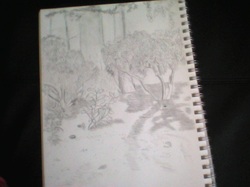
 RSS Feed
RSS Feed
